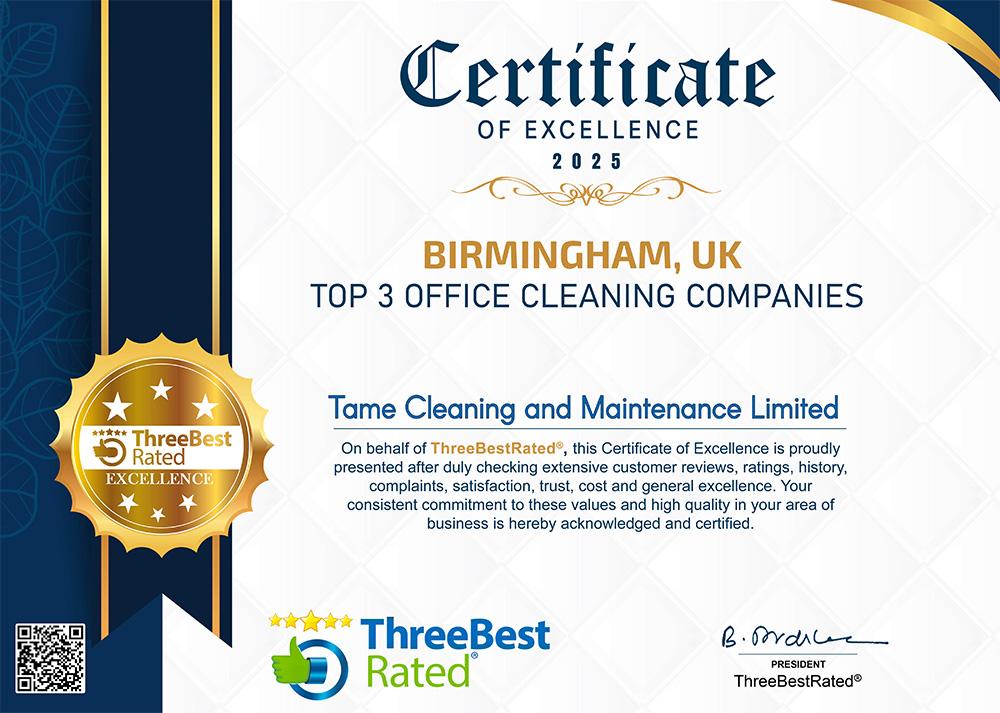
Before most offices open their doors and high streets shrug off the night, an unseen workforce has already reset the stage. Across the UK- from terrace flats and village clinics to stadiums, laboratories, and transport hubs-cleaning companies keep spaces usable, compliant, and quietly reassuring.
This is a broad, layered industry. It ranges from sole traders handling domestic visits to national providers managing multi-site contracts, and from routine dusting and vacuuming to specialist tasks like biohazard remediation, high-level window work, and heritage surface care. Post-pandemic expectations, health and safety obligations, and environmental targets shape how services are delivered, while accreditations and training frameworks help set a baseline for professionalism. Technology now threads through much of it, from app-based bookings to sensors that guide on-demand cleaning, yet people and processes remain at the core.
In the pages that follow, we’ll map the UK cleaning landscape: the main service types, how contracts and pricing tend to work, the standards and certifications that matter, what to ask when hiring, and the trends likely to define the next few years.
Table of Contents
- The UK cleaning market at a glance sectors served, typical service bundles, and regional price ranges
- Verifying credibility accreditations to expect, insurance and DBS checks, and performance metrics that matter
- Sustainability that works eco friendly chemicals, trusted ecolabels, and waste minimisation practices to request
- Choosing the right provider practical RFP questions, KPI targets, and contract clauses that protect outcomes
- Closing Remarks
The UK cleaning market at a glance sectors served, typical service bundles, and regional price ranges
Scale and scope define this landscape: from boutique flats to logistics hubs, providers flex between early-morning opens, after-hours resets, and 24/7 cover. Compliance is non‑negotiable-think DBS-vetted teams, COSHH-safe product handling, and BICSc/ISO-led workflows-while sustainability (eco-chemistry, refill systems, EV fleets) increasingly tips the tender. Core demand clusters span:
- Domestic & short‑let – housekeeping, linen flips, deep turns
- Offices & co‑working – FM-aligned daily cleans, daytime janitors
- Retail & leisure – front-of-house sparkle, touchpoint hygiene
- Hospitality & events – room attendant teams, function resets
- Healthcare & care – clinical protocols, infection control
- Education & campuses – term-time routines, holiday deep cleans
- Industrial & warehousing – machinery-safe methods, floor care
- Construction & after‑builders – snag-ready handovers
- Public sector & transport – high-footfall turnaround
Typical bundles layer consistency with planned periodic work. Expect recurring routines (daily/weekly), deep cleans, end‑of‑tenancy, and after‑builders, plus specialists-carpet & upholstery, window & high‑level, hard‑floor maintenance, waste & washroom, biohazard. Bundles usually include labour, chemicals, equipment, supervision, quality checks, and digital reporting; add-ons may cover consumables management, feminine hygiene units, pest liaison, PAT testing, and minor FM tasks. Price bands shift with region, frequency, access, hours, sustainability spec, and whether supplies are included. A quick snapshot:
| Region | Hourly (from-to) | Deep clean (2‑bed) | End‑of‑tenancy (2‑bed) | Min. call‑out |
|---|---|---|---|---|
| London | £18-£30 | £180-£300 | £220-£360 | £60-£90 |
| South East | £17-£26 | £160-£260 | £200-£320 | £50-£80 |
| Midlands | £15-£23 | £140-£230 | £180-£300 | £45-£70 |
| North of England | £14-£22 | £130-£220 | £170-£280 | £40-£65 |
| Scotland | £14-£22 | £130-£220 | £170-£280 | £40-£65 |
| Wales | £13-£21 | £120-£210 | £160-£260 | £40-£60 |
| Northern Ireland | £13-£20 | £120-£200 | £150-£250 | £35-£55 |
Verifying credibility accreditations to expect, insurance and DBS checks, and performance metrics that matter
Trust is earned when certification is visible, current, and relevant. Look for third‑party badges that speak to process, safety, and ethics-then double‑check them on public registers. For quality and environment, ISO 9001 and ISO 14001 reveal how a provider controls outcomes and waste; ISO 45001 signals robust health and safety. Day‑to‑day industry standards often include BICSc training, plus SSIP‑aligned health and safety schemes like SafeContractor or CHAS. Ethical and operational credibility grows with a Living Wage Employer commitment and a valid Waste Carrier Licence when waste is transported. Serious cleaning companies in the UK will share certificate IDs and expiry dates without hesitation, and their scope of certification should match the services you’re buying.
| Credential | What it shows | Quick check |
|---|---|---|
| ISO 9001 | Consistent quality management | Valid dates + UKAS logo |
| ISO 14001 | Environmental controls | Scope includes cleaning |
| ISO 45001 | Health & safety systems | Auditor listed |
| BICSc | Operative skills standards | Member directory |
| SafeContractor/CHAS | SSIP H&S pre‑qualification | Scheme website |
| Living Wage Employer | Fair pay commitment | Foundation listing |
| Waste Carrier Licence | Legal waste transport | EA public register |
| Cyber Essentials | Basic data security | Certificate ID |
Risk management is non‑negotiable. Ask for a current Schedule of Insurance and confirm limits in writing. Typical expectations: Public Liability at £5m-£10m, Employers’ Liability at £10m, plus Treatment Risk/Products Liability for chemical use, Professional Indemnity where surveys/specs are provided, and Fidelity/Crime & Key‑holding if keys or alarms are handled. Where staff operate around children or vulnerable adults, insist on role‑appropriate DBS checks (Basic for general sites; Enhanced with Barred Lists for regulated activity), alongside right‑to‑work verification and photo ID. Hold providers to measurable outcomes; the metrics below make performance visible and comparable across sites and suppliers.
- Insurance essentials: Public Liability £5m-£10m; Employers’ Liability £10m; Treatment Risk/Products Liability; Professional Indemnity (if advising/specifying); Fidelity/Crime & Key‑holding; named insurer + policy numbers + expiry.
- Workforce vetting: DBS level appropriate to site; right‑to‑work and ID checks; uniformed staff with badges; time‑stamped sign‑in/out trail.
- QA audit score: target ≥ 90% across agreed checklist
- Re‑clean rate: ≤ 2% of tasks per month
- On‑time attendance: ≥ 98% of shifts
- SLA response: emergency ≤ 2h; routine ≤ 24h
- Complaint frequency: ≤ 3 per 1,000 labour hours
- First‑time completion: ≥ 95% without revisit
- Staff retention: ≥ 85% annually to protect continuity
- Sustainability: chemical dilution compliance and zero stock‑out days for consumables
Sustainability that works eco friendly chemicals, trusted ecolabels, and waste minimisation practices to request
Ask providers to document how they reduce environmental impact without compromising hygiene. Prioritise non-toxic formulations and concentrated systems that use less packaging and fuel in transit. Look for third‑party verifications that mean something in the UK market and demand transparency through Safety Data Sheets and site‑specific COSHH assessments. The right partner will also standardise dosing, offer refill stations, and switch to microfibre to cut water and chemical use while maintaining professional results.
- Verified chemistries: EU Ecolabel, Cradle to Cradle Certified, Ecocert, or products meeting OECD 301 biodegradability.
- Low-impact specs: low‑VOC, phosphate‑free, dye‑free, microplastic‑free, fragrance‑free options for sensitive environments.
- Transparent evidence: up‑to‑date SDS, COSHH risk assessments, and product environmental data sheets.
- Efficient delivery: closed‑loop refills, concentrates with calibrated dosing pumps, reusable trigger heads, bulk containers.
- Operational standards: ISO 14001, clear spill-response plans, and staff training records for safe handling.
Cutting waste starts with design, not the bin: map waste streams on site, choose durable tools over disposables, and specify launder-and-reuse systems for cloths and pads. Push for asset maintenance that extends machine life, water‑saving equipment, and route optimisation to lower transport emissions. Use WRAP‑aligned labelling for recycling, audit plastic use quarterly, and set measurable targets on refill rates, contamination reduction, and landfill diversion. A credible company will show you the plan and the proof.
| Ask this | Proof you can see | Benefit |
|---|---|---|
| Concentrates with dosing control | Wall stations, dosing logs | Less plastic, fewer miles |
| Certified cleaning products | Ecolabel certificates, product list | Lower toxicity |
| Microfibre reuse program | Laundry schedule, temp settings | Less water/chemicals |
| Waste segregation plan | Bin map, WRAP icons | Higher recycling rates |
| Zero‑to‑landfill commitment | Quarterly waste reports | Reduced scope 3 impact |
Choosing the right provider practical RFP questions, KPI targets, and contract clauses that protect outcomes
Shortlist with evidence, not promises. When you scope a tender, ask suppliers to show how they run sites like yours today: who cleans, with what training, and how quality is proven. In the UK, credible operators will reference BICSc pathways, DBS where appropriate, ISO 9001/14001/45001, and demonstrable TUPE competence. Probe their digital stack (CAFM, time-and-attendance with geofencing, QR sign‑offs), chemical safety compliance (COSHH), and sustainability (dilution control, closed-loop consumables, waste segregation). Ask for a mobilisation plan with risks, and insist on site-specific RAMS, workforce stability, and holiday/sickness cover models that don’t sacrifice standards.
- Capability fit: Which sectors and buildings of similar size/footfall do you service? Provide two anonymised monthly QA packs.
- People & vetting: Right-to-work/DBS process, TUPE approach, and % staff on the Real Living Wage.
- Quality engine: Audit methodology (e.g., BS EN 13549), supervisor ratios, re-clean workflow and SLA.
- Data & visibility: CAFM screenshots; how are attendance, tasks, and incidents evidenced and shared?
- Resilience: Absence cover bench, peak-period resourcing, and escalation paths (names, numbers, timeframes).
- H&S & environment: COSHH controls, RAMS refresh cadence, waste diversion, and chemical reduction plan.
- Innovation & value: Pilots offered in year one, measurable savings, and how benefits are guaranteed.
Lock outcomes into the contract, not the brochure. Use a tight KPI suite with clear definitions, independent evidence, and remedies that bite-while rewarding excellence. Keep targets realistic at go‑live, then ratchet after a 90‑day baseline. Tie pay to performance via service credits that are not the sole remedy, and embed governance (monthly reviews, quarterly strategy) with transparent change control and capped indexation. Ensure exit-readiness from day one: data portability, IP use of SOPs, and orderly handover baked in.
| KPI | Target | Evidence | Safeguard |
|---|---|---|---|
| QA audit score | ≥ 90% monthly | Independent audits | Credits; step‑in if <80% two months |
| Response to spills | ≤ 20 mins | Helpdesk timestamps | Manager escalation at 10 mins |
| Attendance compliance | ≥ 97% hours | Geofenced T&A | No‑charge re‑clean; LDs for misses |
| Complaint rate | ≤ 2 per 100k sq ft | CRM tickets | Root‑cause plan in 5 days |
| Waste diversion | ≥ 75% | Weighbridge logs | Improvement plan or credit |
- Service credits: Tiered and cumulative; not exclusive remedy.
- Change control: Fixed rate card; written approvals only.
- Indexation: CPIH link with annual cap; no mid‑term uplifts.
- Re-clean rights: Within 24 hours at no charge; evidence required.
- Compliance warranties: TUPE/COSHH/Right‑to‑Work with indemnities.
- Exit & data: Clean asset register, staff lists, and 12 months of performance data on termination.
Closing Remarks
In the end, the UK’s cleaning sector is less a single marketplace than a mosaic-national brands beside local specialists, eco-forward startups alongside time-honoured firms, domestic tidying next to industrial deep cleans. What unites them is a promise of consistency in a world that rarely stands still. From flexible contracts and transparent pricing to rigorous training and credible accreditations, the markers of quality are there for those who look closely.
As expectations shift-toward greener products, better labour standards, and smarter technology-the companies that endure will be those that align service with substance. Whether that means opting for biodegradable chemicals, favouring Living Wage commitments, or choosing providers with clear SLAs and responsive support, the best fit is the one that reflects your space, your schedule, and your standards.
Looking ahead, automation, data-led scheduling, and app-based booking will likely sit alongside the timeless fundamentals: reliability, respect for premises, and a job done properly. From London offices to Highland holiday lets, the choices are broad, and the differences often subtle. Take the measure of them. In a field built on attention to detail, the right partner is found in the fine print as much as the gleam on the surface.





